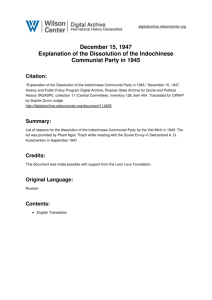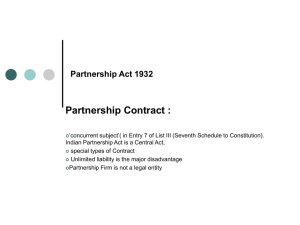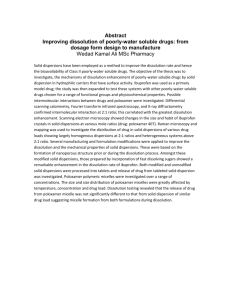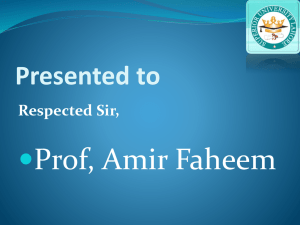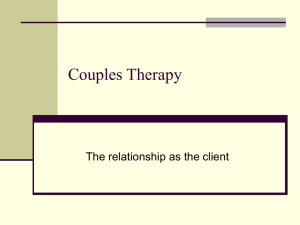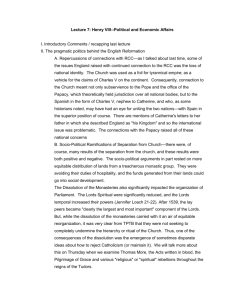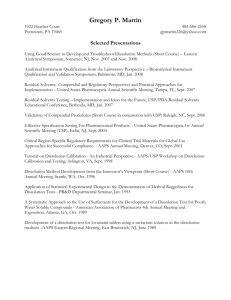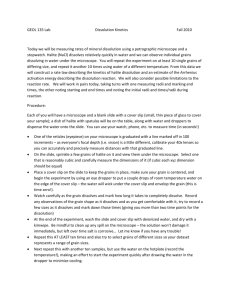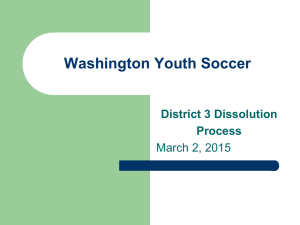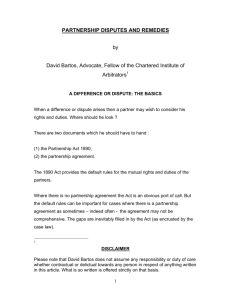File
advertisement
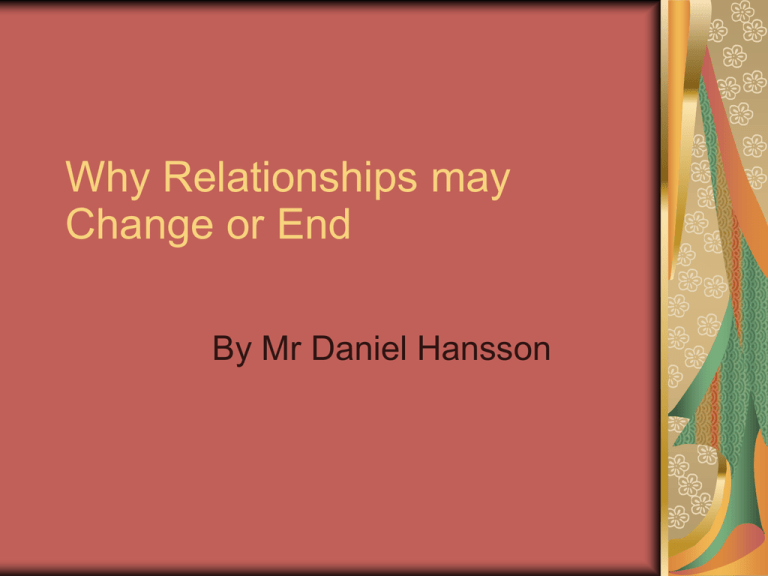
Why Relationships may Change or End By Mr Daniel Hansson Models of Relationship Dissolution Lee’s sequences of separation model (1984) Duck’s model of dissolution (1999) Lee’s Sequences of Separation Model (1984) Based on a survey on 112 romantic break ups of premarital couples, Lee identified the following stages: • Dissatisfaction-Recognising there is a problem • Exposure- Problem brought out into open. • Negotiation- Discussion about issue raised • Resolution Attempts-Each partner attempts to problem solve. • Termination-Resolution attempts are unsuccessful. Duck’s Model of Dissolution (1999) Duck supposed there were five stages which could be triggered by a threshold. 1. Breakdown-Dissatisfaction leads to crisis. Repair strategy: correct own faults 2. Intra-psychic phase-Thinking about relationship in private, then with close friend. Repair strategy- re-establish liking for partner. 3. Dyadic phase- Deciding to break up/repair: repair strategy- recalculate rules for future. 4. Social phase. Include others in your argument i.e. take your side. Repair strategy outsiders encourage reunion. 5. Grave Dressing- Public & private dissection of relationship. Repair strategy- Try to salvage friendship and agree upon acceptable version of events. Evaluation These models show that dissolution is not a sudden step but a process They identify stages where things start to go wrong Some Reasons for Break Ups Withdrawal (social penetration theory) Rule violations Individual Differences (e.g. communication, cultural, gender) Reduced proximity Changes in lifestyle Negative emotion and poor communication Rule Violations Argyle & Henderson (1984): 160 participants aged 17-34 were asked on the dissolution of friendships The most critical rule violations were jealousy, lack of tolerance for a third party relationship, disclosing confidences, publicly criticizing the person and not volunteering when helping Individual differences: Women identified emotional support, younger participants public criticism, over 20s lack of respect or request for personal advice Individual Differences Brehm & Kassin, 1996: Women are more likely to stress unhappiness and incompatibility whereas men are more upset by sexual withholding Caspi & Herbener (1990): A longitudinal study of 135 married couples found that similarity between was related to marital satisfaction Hill, Rubin, & Peplau (1976): A two year study of dating relationships among college students. Found differences such as age, education, intelligence, unequal involvement in the relationship, and physical attractiveness. The desire to break up was seldom mutual. Reduced Proximity Shaver et al. (1985): Moving away from each other often leads to the dissolution of relationships Holt and Stone (1988): Found out that there was little decrease in relationship satisfaction for long distance relationships if lovers were able to unite regularly. Changes in Lifestyle Hays & Oxley (1986): Found that the most adaptive social networks for first-year university students involved new friends who were also university students rather than old school or neighborhood friends. Negative emotion Rogge, 2010: 222 volunteers in romantic relationship conducted a computer task where they were to associate their partner’s first name with positive or negative words. Volunteers who found it easy to associate their partner with bad words and difficult to associate her with good things were more likely to separate over the next year. Negative emotion Gottman (1988) has developed a model to predict which newlywed couples will remain married and which will divorce four to six years later. He claims that his model has 80-90% accuracy. His prediction method relies on Paul Ekman's method of analyzing microexpressions of couples in the laboratory (observation analyzed by content analysis). Gottman believes that the four emotional reactions that are most destructive for relationships are defensiveness, stonewalling (withdrawal from relationship), criticism and contempt. He considers contempt to be the best predictor for marital success.
